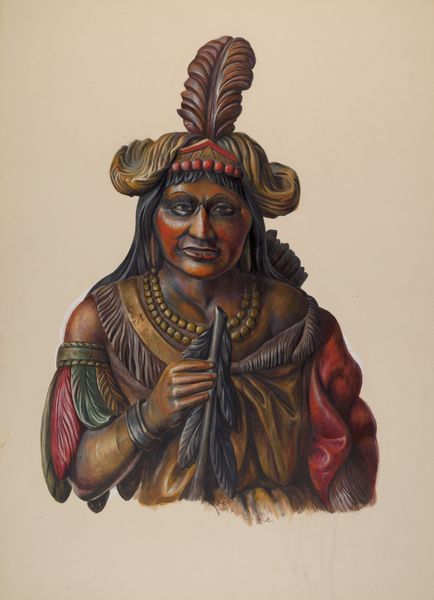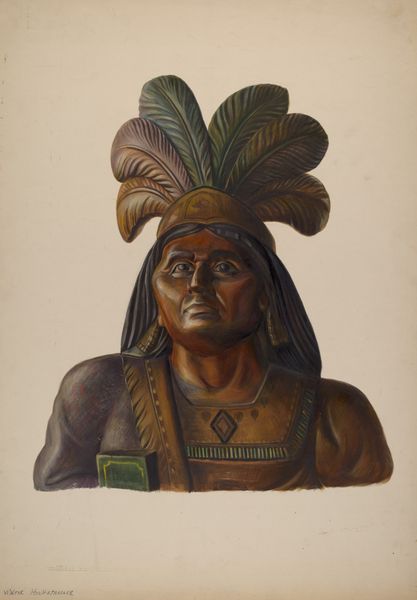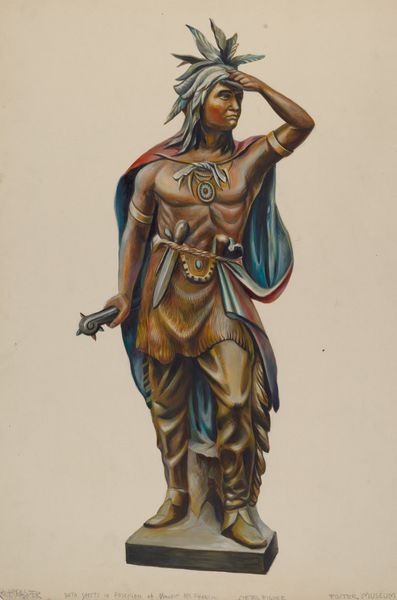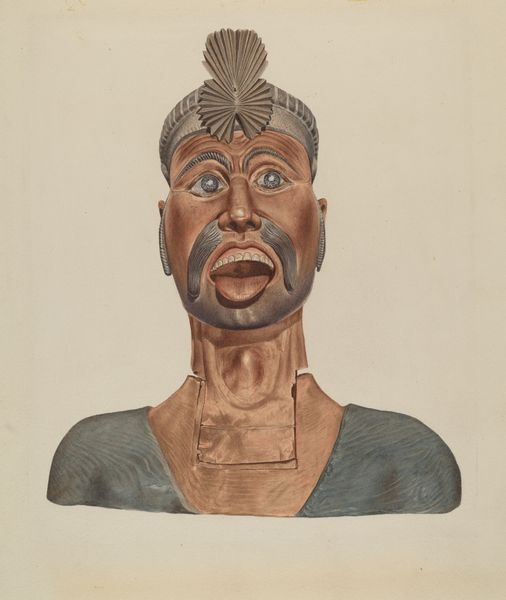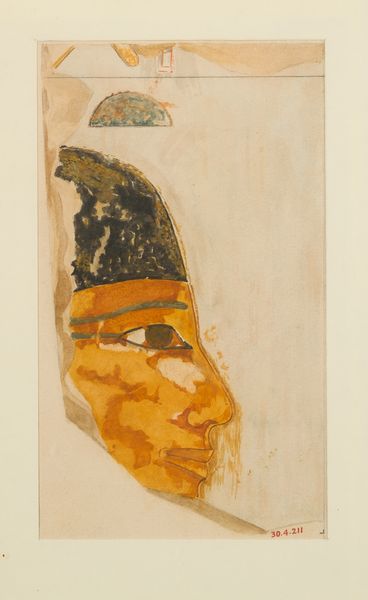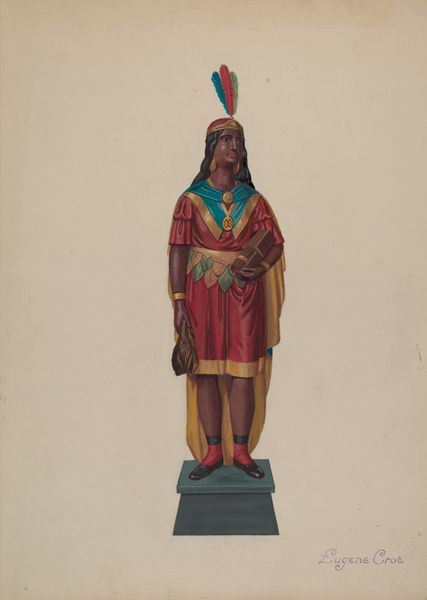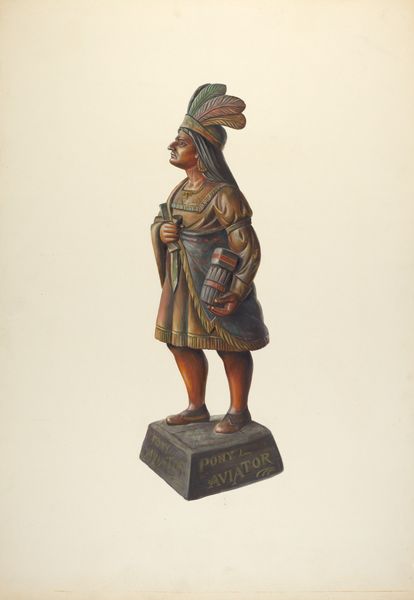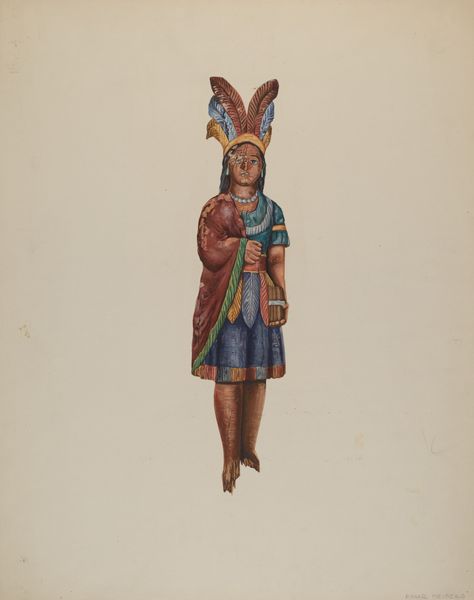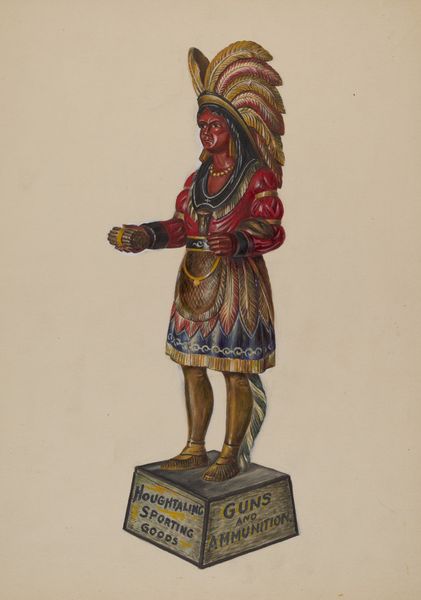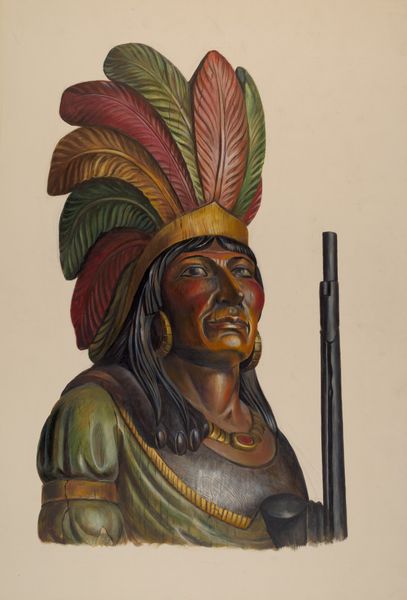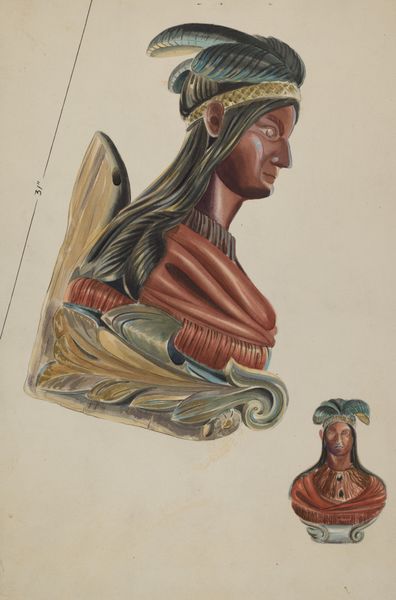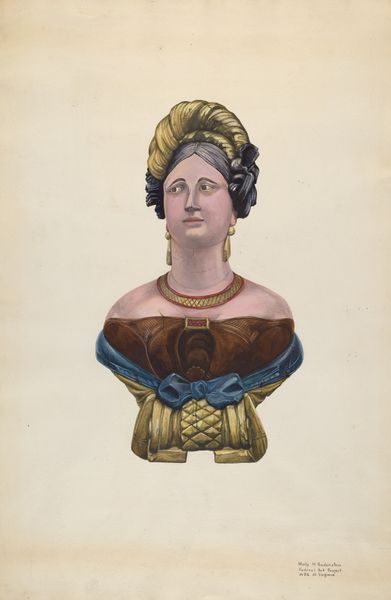
painting
#
portrait
#
painting
Dimensions: overall: 44.8 x 32.6 cm (17 5/8 x 12 13/16 in.)
Copyright: National Gallery of Art: CC0 1.0
Curator: Looking at this watercolor by Mary E. Humes, dating from around 1938, I’m immediately drawn to the almost ghostly rendering of what appears to be a ship's figurehead. It's intriguing, the visible cracks in the painted surface give it a worn, aged feel. Editor: Yes, the cracks evoke age, but what strikes me is how it frames the romanticized idea of the "Indian Princess"— a construction heavily steeped in colonial narratives and the male gaze. Note the term: It suggests a specific type, erasing diverse indigenous identities, doesn't it? Curator: Absolutely, and it makes me think about the material reality of its production. Someone carved that figurehead, likely a skilled artisan, and the original function aboard the ship, battling the elements, now reduced to an image. I'm wondering who these crafts people were, were they local or brought in? The process and the skill behind the art have its own kind of impact. Editor: Precisely. The title’s deliberate appropriation of "princess" speaks volumes about the power dynamics at play. It transforms indigenous women into objects, possessions even, within a Western, colonial framework. Notice the necklace, rendered with painstaking detail, drawing our eye to notions of beauty, class, and idealized roles that might not have existed prior to European contact. Curator: The layering of the necklaces themselves seem to carry weight – literally and figuratively! They emphasize how decoration plays an interesting, albeit potentially complex, role in the craftsmanship of the image. It raises the question of value too, given that Humes painted this, there is an interesting interaction going on with artistic representation. Editor: Representation indeed. Humes' choices serve not merely as art but a perpetuation, however unconscious, of existing stereotypes, continuing problematic trends that linger still in the art world and the social fabric. Curator: I’m left considering the hands that built it. Thinking about their own influences in the creation process of this Indigenous representation in an artistic context that simultaneously elevates and essentializes this depiction. Editor: And that essentializing – a critical reminder that this artifact needs continuous scrutiny in terms of what cultural biases and social structures it represents.
Comments
No comments
Be the first to comment and join the conversation on the ultimate creative platform.
